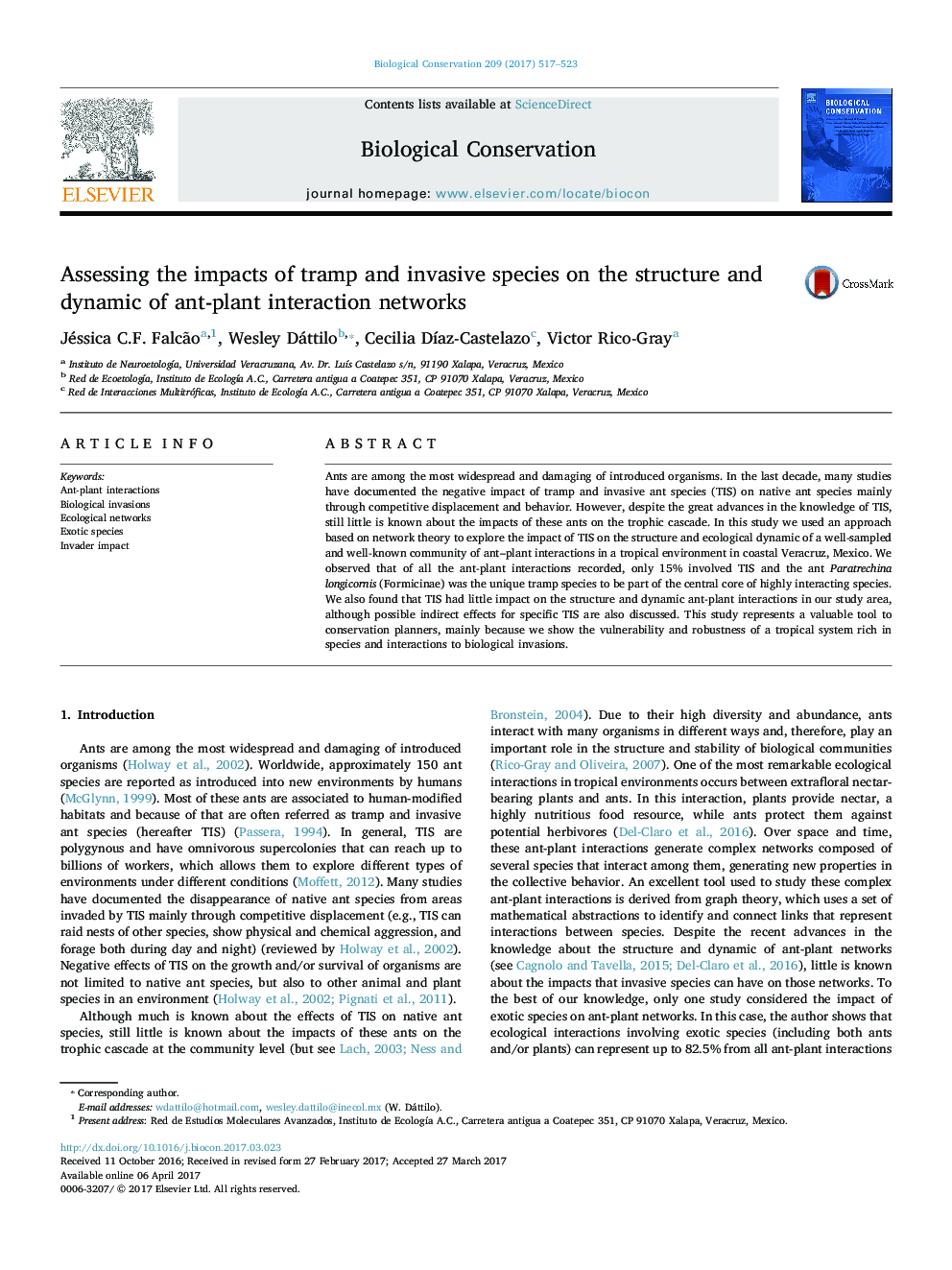| Article ID | Journal | Published Year | Pages | File Type |
|---|---|---|---|---|
| 5743354 | Biological Conservation | 2017 | 7 Pages |
Ants are among the most widespread and damaging of introduced organisms. In the last decade, many studies have documented the negative impact of tramp and invasive ant species (TIS) on native ant species mainly through competitive displacement and behavior. However, despite the great advances in the knowledge of TIS, still little is known about the impacts of these ants on the trophic cascade. In this study we used an approach based on network theory to explore the impact of TIS on the structure and ecological dynamic of a well-sampled and well-known community of ant-plant interactions in a tropical environment in coastal Veracruz, Mexico. We observed that of all the ant-plant interactions recorded, only 15% involved TIS and the ant Paratrechina longicornis (Formicinae) was the unique tramp species to be part of the central core of highly interacting species. We also found that TIS had little impact on the structure and dynamic ant-plant interactions in our study area, although possible indirect effects for specific TIS are also discussed. This study represents a valuable tool to conservation planners, mainly because we show the vulnerability and robustness of a tropical system rich in species and interactions to biological invasions.
